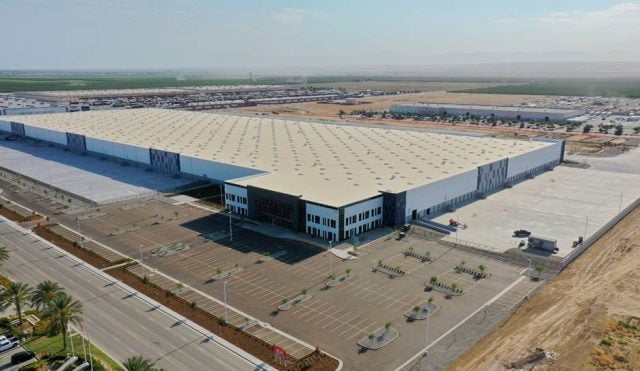NORTHEAST/MID-ATLANTIC
Policies supporting the construction of high-speed rail are getting back on track and gaining speed on the federal level. On July 9, Amtrak released a plan for the Northeast Corridor outlining its long-term vision to accommodate more trains operating at faster speeds, with significantly reduced trip times and improved service reliability. It also called for the development of the next generation of high-speed rail, reaching speeds of 220 mph among four major hubs: Boston, New York City, Philadelphia and Washington, DC.
The study—marking the third update in the conceptual development and planning process for the Northeast “megaregion”—provides input for a new environmental analysis and master plan initiative led by the Federal Railroad Administration. Under the new proposal, travel times would shrink to 37 minutes from New York to Philadelphia and 94 minutes from New York to Washington, DC, promising increased commuter efficiency and encouraging economic development across the region…
SOUTHEAST
The keyword on the Southeast’s infrastructure scene is ports. Although roadway and railway projects are seeing some attention, ports are the critical link to commercial real estate growth in many Southeast regions.
According to the recent Urban Land Institute/Ernst & Young Infrastructure 2012 Report, trans-Atlantic freight could double over the next 15 years, and deep-hulled, super-post-Panamax container ships will be able to pass through a widened Panama Canal channel into the Atlantic by year-end 2014.
“Infrastructure won’t reach capacity without the real estate solution alongside,” says John Carver, head of the industrial real estate group at Jones Lang LaSalle. “At the same time, the commercial real estate industry is aware that it can be more productive with development money by clustering alongside the rail and seaport systems.”
MIDWEST
Just going by amount of jobs needed, it could be argued that the Midwest needs new high-speed rail corridors more than any other region. The massive amount of job vacancies in the Rust Belt cities such as Detroit, Cleveland and Indianapolis could be cut dramatically if there was a way to get fast rail between them—and to job-rich Chicago—and dead stations could benefit by the added rail use.
However, even the two major arteries given priority by President Barack Obama’s high-speed rail vision, California and the Northeast, have had enormous trouble getting off the ground due to cost issues and other concerns, according to the infrastructure report by ULI/Ernst & Young. After three years, in early July 2012, Amtrak released a visioning plan for the Northeast and California legislators agreed to start building the state’s first dedicated high-speed rail line.
The Midwest will take much longer, Ray Lang, chief of state government relations for Amtrak, tells Real Estate Forum. He says higher-speed rail is in the works for the Midwest lines, but confirmed that the desire is for “gradual implementation.” And while light rail is still expanding in Chicago and some cities like Minneapolis, other cities are still passenger-rail poor, such as Detroit, which recently lost federal government confidence in a light rail project along Woodward Avenue…
SOUTHWEST
Mention the words “infrastructure in Texas” and what might come to mind are highways and roadways. There is good reason for this; a quick study of a Lone Star State roadway map shows that much of the state centers around Interstate and federal highways between the major cities as well as loops around these cities to avoid congestion.
“Dallas and Houston are the poster children for growth that occurs around roadways and highways,” comments John Sedlak, manager of rail passenger research for the Texas Transportation Institute. “These cities were very much driven by automobile travel as a primary means of transportation.” What followed were what Sedlak calls “broad suburbs” unlimited by geographic constraints.
These days, those “broad suburbs” are being connected to CBD and other business and commercial real estate hubs, not with more roadways, but with light rail…
WEST
When anyone mentions Southern California, and L.A. in particular, the biggest infrastructure issue that comes to mind is traffic congestion. If you came to the city in the 1920s, ’30s and ’40s, it was a dynamic, busy and dense downtown—a slightly less claustrophobic version of cities like Manhattan or Chicago in terms of the amount of cars and people on the street, Carol Schatz, president and CEO of the Central City Association of L.A. and Downtown Center Business Improvement District, tells Real Estate Forum.
“Once the 1950s rolled around, and as freeways began to define the city’s transportation culture—splicing downtown into sections, coupled with the general move-out into the suburbs—we became a suburban commuter culture as opposed to an urban culture, and we are paying the price,” Schatz says. While she acknowledges that the added issue in having to deal with other municipalities can create a huge gridlock—in terms of quickly and effectively solving the transportation and traffic issues—she says that a real solution, Measure R, is on the table.
Measure R was approved in 2008 by a two-thirds majority, committing a projected $40 billion to traffic relief and transportation upgrades throughout the county over the next 30 years. It is expected to help fund dozens of critical transit and highway projects, create more than 210,000 construction jobs and infuse an estimated $32-billion back into the local economy, according to estimates by the nonprofit Los Angeles County Economic Development Corp…
For the full analyses on each of the regions, visit the July/August issue of Real Estate Forum.
© 2025 ALM Global, LLC, All Rights Reserved. Request academic re-use from www.copyright.com. All other uses, submit a request to [email protected]. For more information visit Asset & Logo Licensing.







